- Home
- Bobby Akart
Choose Freedom: A Post-Apocalyptic Fiction Series (The Boston Brahmin Book 6) Page 15
Choose Freedom: A Post-Apocalyptic Fiction Series (The Boston Brahmin Book 6) Read online
Page 15
The New Hack House
Boston, Massachusetts
“I have to say I could get used to this,” said Fakhri, breaking a long period of silence while her fellow members of the Zero Day Gamers continued their monitoring of the PacTel communications network. For days, they’d conducted penetration testing of the servers and finally found a vulnerability. The Gamers were careful to avoid detection although it was unlikely the NSA was paying attention under the circumstances.
The President had been using the antiquated system that was a holdover from the Cold War. It was much slower than the newly installed fiber-optic cables utilized by AT&T, the primary telephone and Internet provider along the Pacific Coast. The PacTel system had been hardened against electromagnetic pulses in the eighties. The entire network also contained sophisticated, off-grid power sources that allowed it to continue operation. The only drawback was access. The system used modular jacks that accommodated the older model, rotary dial phones. Most Americans didn’t have those anymore.
“You like being held prisoner?” asked Malvalaha.
“No, of course not, Leo. I like being fed well and protected in a building with heat, air, and electricity. There are worse places to live, remember?”
Professor Lau remained quiet during the exchange. He’d been through a lot. The hospital stay had been grueling because of the painful treatments he’d had to receive. He had been tortured and mistreated by O’Brien and La Rue. At least in this prison, as Fakhri said, he was able to get some normality back in his life.
Plus, there was nothing better than computer therapy. The Zero Day Gamers truly enjoyed their old jobs of constantly seeking and exploiting weaknesses in a computer network. Initially, he and his former graduate assistants at MIT had become a part of the computer underground for the challenge and enjoyment.
Lau had eventually realized he could monetize their talents and a fledgling business had sprung out of their relationship. Soon, the three of them, together with talented MIT students, had become the Zero Day Gamers—motivated by protest and profit.
“Good morning, y’all,” announced Drew as he entered the hackers’ lair.
“Hi, Drew,” replied Fakhri. Drew and Fakhri had bonded following the abduction that day at Birch Pond. Fakhri had thought she was going to die and was touched by Drew’s courtesy and compassion. It was Fakhri who convinced Lau and Malvalaha to get used to their new role and embrace it. Besides, it was better than being on the streets.
Drew approached the three Marines who rotated shifts, watching the activities of the Zero Day Gamers. They were seasoned computer professionals from Fort Devens who monitored every keystroke undertaken on the sophisticated computer system created by Morgan’s personnel last summer. Naturally, the Gamers were familiar with the systems. They had initiated the mother of all cyber attacks on that September 3.
“The ladies back at 1PP baked fresh muffins, using canned peaches, blueberries, and apples,” said Drew as he handed them out to the Marines. He approached the Gamers as well. “Here, y’all. Enjoy.” As the muffins were passed around, Drew returned to his backpack and pulled out a Hannaford grocery bag. He handed it to Lau.
“Professor, I’m told you’re a Red Sox fan. I know there isn’t much going on in Fort Myers right now as it relates to spring training, but I’m sure we’ll see games again at some point.”
Lau stood and looked at Drew. He couldn’t bring himself to say anything. Over the last eight months, he went from being on his deathbed to being bandied about like a baseball during infield warm-up. Lau managed a smile through his scarred face.
The former MIT professor removed his sweater and put on the Red Sox jersey. For years, this was part of his everyday attire. It wasn’t his favorite player’s jersey, Koji Uehara. However, the simple number eight on the back brought back memories of the great Carl Yastrzemski, who wore this jersey until it was retired.
He placed the cap on his head, which was beginning to grow hair again, at least on one side. It fit perfectly. Lau squeezed the bill and adjusted its fit. With a tug of the jersey, he stood and admired himself with pride.
He looked down at Fakhri and Malvalaha, who were becoming emotional at Lau’s transformation. It felt like old times. Lau muttered, “Thank you,” to Drew, and then he gave him a hug. Lau quickly returned to his computer as the tears began to stream down his face.
Chapter 36
Friday, March 17, 2017
St. Patrick’s Day
10:00 a.m. EDT
Western White House
Honolulu, Hawaii
In stark contrast to the meeting on Monday, the President was sullen and morose, but it wasn’t exhibited in the violent outbursts that had overshadowed the Monday gathering. Rumors were rampant throughout the Western White House that the President was exhibiting symptoms of manic depression and bipolar disorder. He was rarely sleeping, and when he did, it was during odd times of the day.
The First Lady and their children had moved to a different residence on the compound. This exacerbated problems for his staff. For years, the President’s wife had had a calming effect on him. But Valerie Jarrett, his new chief of staff, became more actively involved in the day-to-day affairs of the administration. Jarrett was his new sounding board and confidante, among other things.
Today’s briefing was attended by the director of Homeland Security and General Mason J. Sears, the chairman of the Joint Chiefs of Staff, and their aides. General Sears was an insider for John Morgan and the Boston Brahmin until recent events. As the President became distrustful of his advisors, General Sears found himself increasingly out of the loop. Today’s meeting was an exception.
“Mr. President, I have been unable to provide you a detailed operations plan because I don’t know what the target is,” started General Sears. “Sir, you’ve told me to provide you a military option to strike a terrorist cell on American soil. That’s not much for me to work with.”
“The target is based on need to know,” gruffed the President, who swiveled his chair toward the attendees, turning his attention away from the crashing surf.
“I understand, sir,” continued General Sears. “Sir, my security clearance is the same as yours. I can’t imagine a reason why you’d—”
The President sat up in his chair and pointed his finger at General Sears. “Do you have a military option for me or not?”
“Sir, ground troops are not feasible due to our diminished capabilities,” replied General Sears. “We have the Air Force option. I could arrange a sortie from a nearby base to bomb the location.”
“What else?” asked the President.
“We could task a drone, sir,” replied General Sears. “The results would be the same.”
“Fine.”
“Sir, if I might add, however, we might have difficulty finding fighter pilots to drop bombs on Americans on American soil.”
“Don’t pilots fly the drones from Nevada?” asked the President.
“Yes, sir. But psychologically, I believe there is a difference between dropping on a target via computer monitor than eyes-on.”
The President rubbed his temples. He reached into his desk drawer and pulled out an amber-colored prescription bottle with no label. He took two pills and chased it with a swig of bottled water. The headaches were back, with a vengeance.
“Okay, use a drone,” ordered the President. “Mr. Secretary, you make the arrangements.”
“Yes, sir,” replied the Secretary of Homeland Security, who stood and buttoned his jacket. He immediately began to whisper instructions to his aide.
The President looked at General Sears. “Sears, you’re relieved of command. You’ll be returning stateside today.”
“But,” stammered General Sears, “sir, I don’t understand. Why would you do this?”
“Because I’m the goddamned President of the United States and I can do whatever the fuck I want!”
Chapter 37
Friday, March 17, 2017
St. Patrick’s Day
/>
2:00 p.m. EDT
Creech Air Force Base
Indian Springs, Nevada
Creech Air Force Base comprised over two thousand acres located about forty miles northwest of Las Vegas. Originally known as the Indian Springs Air Force Base, Creech AFB was fully operational during World War II, but was closed for a period of time until it was reopened in the fifties.
Creech AFB was currently used by the Air Force for command and control of its daily overseas contingency operations—drone warfare. The Top Gun culture that became synonymous with the fighter pilots at Miramar was now on full display at Creech AFB. With the rise of drone warfare, the Air Force began using their top aviators to remotely operate the unmanned aerial drones. While Nellis Air Force Base to their southeast enjoyed the notoriety, Creech pilots got the job done.
First Lieutenant Marco LaPaz leaned back in his squeaky office chair and stifled a yawn with the back of his hand. The room he occupied with another former fighter pilot, Johnny Howard, smelled of armpits and nachos. The plain beige trailer was filled with a bank of computer screens and several keyboards. But the normal hum of air conditioners in the background stopped as the Air Force cut back on unnecessary electrical usage.
LaPaz disagreed with the Air Force on this point, as well as many others. He wanted to pilot F-35s. It was what he was trained for and he was good at it. But with the rapid increase of drone warfare under this administration, he was reassigned to the middle of bum-fuck-Egypt, which he and Howard affectionately called Creech AFB.
LaPaz was on the verge of dozing off when Howard returned from the latrine. “Don’t tell me you’re getting tired of all this excitement, LaPaz,” boomed Howard with his baritone voice as he shut the door behind him.
“Why don’t you leave that door open?” asked LaPaz. “It smells like ass in here.”
Howard tossed a pack of gum on the desk in front of LaPaz, who quickly snatched a piece. Gum was a real luxury. He popped a piece out of its wrapper and immediately started chewing. He hoped it would provide some relief to the noxious smells in the room. Nope, still smells.
“No can do, amigo,” replied Howard. “Regulations, don’t you know.”
“Who cares? We’re not doing anything.”
The two men sat in silence for a moment as they monitored the screens on their workstations, which were devoid of activity. The military had stopped all overseas missions while the nation attended to its own personal business. Both men agreed the cockroaches would be coming out of hiding throughout the Middle East now.
“Do you think the major would mind if we piped in some mariachi music and entertained a couple of ladies from the Chicken Ranch?” asked LaPaz.
“No problemo,” replied Howard, who frequently misused Spanish lingo to poke fun at LaPaz. The two men laughed and LaPaz was reaching for another piece of gum when a message popped up on his computer screen.
“Shit,” muttered LaPaz.
“What’s up, brother?” asked Howard.
“I just received a message from the major,” replied LaPaz. “We’ve received a new OP. It’s TS/SCI.” This was the category for top secret, sensitive compartmented information. It was designed for people who had top-secret clearances but who might, in order to do their jobs, need to know certain information that was especially sensitive. The vast majority of the operational tasks assigned to LaPaz and Howard fell under the secret classification, a lower category.
“What’s the target?”
“This can’t be right,” replied LaPaz. “The major is on his way. I’m sure he’ll explain.”
“C’mon, man,” insisted Howard. “What’s the target?”
“Massachusetts.”
Chapter 38
Friday, March 17, 2017
St. Patrick’s Day
3:00 p.m. EDT
Creech Air Force Base
Indian Springs, Nevada
The door flung open and Major Curtis Rawlings stepped inside and brought a welcome gust of fresh desert air with him. LaPaz and Howard jumped to their feet and stood at attention. The major removed his cap and sunglasses and closed the door behind him. He was accompanied by his aide, Captain Thomas.
“At ease, gentlemen,” instructed the major. “Please, everyone grab a seat. We need to fully understand this mission and the complicated scenario it presents.”
“Yes, sir,” said LaPaz as he glanced in the direction of Howard. The two lieutenants took their seats in front of their stations.
“Gentlemen, I’m going to be brutally frank with both of you,” started Major Rawlings. “We’ve received a tasking order that involves an American target located in central Massachusetts. This mission is classified TS/SCI, which means we aren’t privy to the intel on who the target is and why they’re located on American soil. But the order came straight from the top, and the target has been labeled high value.”
“May I speak freely, sir?” asked LaPaz.
“Please do,” replied the major.
“We’ve used our drone program on Americans abroad before, sir,” started LaPaz. “But Howard and I didn’t realize it until well after the mission was completed and it came out in the news. Sometimes the American citizens are collateral damage. But in the case of Yemen and Pakistan, the targets were Americans.”
“That’s true,” added Major Rawlings. “They were also Taliban and al-Qaeda operatives.”
LaPaz shifted uneasily in his chair. He didn’t want to enter into a debate with his commanding officer or appear insubordinate. Every service member and their families located within the confines of Creech AFB knew the unwritten rule—follow orders or be prepared to ship out to a new post without the comfort and security of Creech.
“Sir, without getting technical, we’re under CENTCOM’s AOR,” said Howard. “Isn’t this a matter for NORTHCOM and Nellis?”
“That puzzles me too, Lieutenant,” replied Major Rawlings. “However, these are unusual times. Areas of responsibility are blurred at the moment.”
LaPaz gathered the courage to press the issue. “Major, our target is the United States. Are we targeting Americans?”
Major Rawlings leaned back in his chair and looked to the ceiling. “Son, I’m not privy to that information. High value is all I’ve got for you. I do know this. The former attorney general, Eric Holder, issued an opinion that gave the green light to the President, which allowed military force to kill an American on U.S. soil in extraordinary circumstances. The President must believe this is extraordinary.”
LaPaz looked to Howard and shrugged. “Let’s get started, then.”
Howard and LaPaz swung their chairs around and eased into their stations.
Each trailer held a two-person crew—a pilot, LaPaz, and a sensor, Howard, who operated the ball. Both faced half a dozen computer screens, including map displays and close-up shots of the object under surveillance. As in any plane, the pilot used a flight stick with various buttons.
Of the two keyboards in front of the pilot, the one he typically used the most was the chat keyboard. On a normal mission, he’d be writing messages to others involved while talking into his mouthpiece to the JTAC, Joint Terminal Air Controller, usually a staff sergeant near the site under surveillance.
“Sir,” began LaPaz, “are we searching for a particular individual or group of individuals?”
“No,” replied Major Rawlings. “It’s a compound of some kind located in the middle of a peninsula in the Quabbin Reservoir of Massachusetts. Our mission is to destroy the entire compound.”
LaPaz looked at Howard. “Whadya think?”
“We’ve got a Pred available,” replied Howard. “It’s packin’ two Hellfires.”
The MQ-1 Predator drone, or the Pred, as its crews called it, was the most famous of several dozen unmanned aerial vehicles utilized by the U.S. military. For twenty years, the Predator UAVs chased al-Qaeda and Taliban leaders from one end of the Middle East to the other.
The Predator looked like a big glider. With its tw
enty-seven-foot length and fifty-foot wingspan, it was comparable in size to some of the largest civilian aircraft in the country. Without its mounted ordnance, the Predator was light enough to have its tail lifted off the ground with one hand.
At a cruising speed of eighty to one hundred miles an hour, the Predator became the military’s favorite weapon in counterinsurgency operations where the goal was to hunt and kill individual or small groups of enemy fighters.
“Major, who do we JTAC with on this mission?” asked LaPaz.
“Nobody,” replied Major Rawlings. “I’ll keep NORAD and the President abreast of our progress by phone.”
“Phone, sir?” asked LaPaz. “We didn’t have a brevity briefing today.”
The day at Creech AFB began with a pilots’ briefing. These briefings usually contained an overview of the basics applicable to their operations, followed by an intelligence backgrounder, including weather for their theater of operations, and concluded with the brevity, or multiservice code words for the day.
“OPSEC is not an issue today, Lieutenant,” said Major Rawlings as he stood and reached for the recently issued Blackberry out of his fatigues. “I don’t think the Taliban or al-Qaeda will be listening in.”
A quiet hush came over the room as pilot and sensor began their task in tandem. In front of them were grim, colorless computer screens in monochromatic, pulsing darkness, which created a three-dimensional world of flashing digits.
Predator pilots flew blind, using only the visual depiction of their location on a map and mathematics—numerical readouts indicating latitude, longitude, height, wind speeds, and ground elevations.
The camera in the rotating ball affixed to the belly of the drone concentrated primarily on the target. Under normal missions, the crew’s focus was restricted to the enemy on the ground. The JTAC had their back, so to speak. If the Predator was circling its prey, the pilot might preprogram a hexagonal, racetrack, or circular-type holding pattern as it awaited an opportunity to strike. On this mission, the GPS coordinates were entered and a cruising speed based upon weather conditions and ordnance was determined.

 Geostorm The Collapse: A Post Apocalyptic EMP Survival Thriller (The Geostorm Series Book 3)
Geostorm The Collapse: A Post Apocalyptic EMP Survival Thriller (The Geostorm Series Book 3)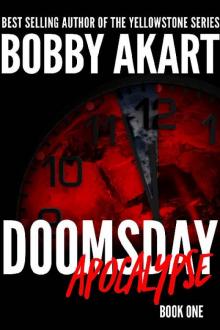 Doomsday Apocalypse
Doomsday Apocalypse Nuclear Winter Desolation: Post Apocalyptic Survival Thriller (Nuclear Winter Series Book 5)
Nuclear Winter Desolation: Post Apocalyptic Survival Thriller (Nuclear Winter Series Book 5)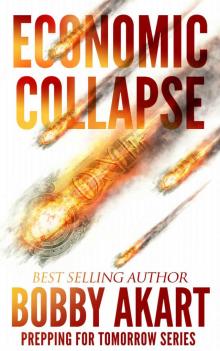 Economic Collapse (Prepping for Tomorrow Book 2)
Economic Collapse (Prepping for Tomorrow Book 2) Nuclear Winter Armageddon
Nuclear Winter Armageddon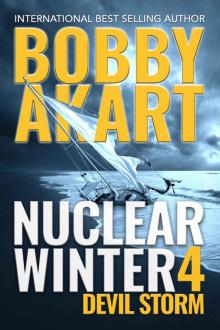 Nuclear Winter Devil Storm
Nuclear Winter Devil Storm Virus Hunters 3: A Medical Thriller
Virus Hunters 3: A Medical Thriller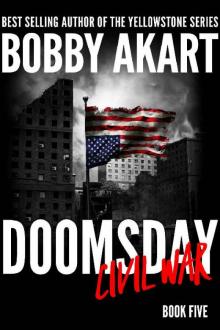 Doomsday Civil War: A Post-Apocalyptic Survival Thriller (The Doomsday Series Book 5)
Doomsday Civil War: A Post-Apocalyptic Survival Thriller (The Doomsday Series Book 5) Asteroid Destruction
Asteroid Destruction Geostorm the Shift
Geostorm the Shift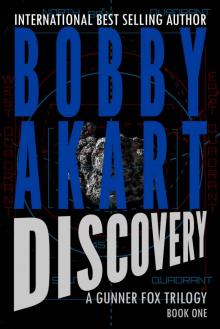 Asteroid Discovery
Asteroid Discovery Virus Hunters 2: A Medical Thriller
Virus Hunters 2: A Medical Thriller Geostorm The Shift: A Post-Apocalyptic EMP Survival Thriller (The Geostorm Series Book 1)
Geostorm The Shift: A Post-Apocalyptic EMP Survival Thriller (The Geostorm Series Book 1)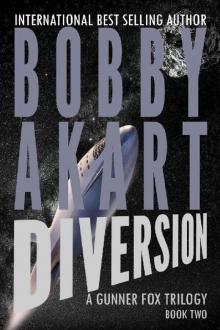 Asteroid Diversion
Asteroid Diversion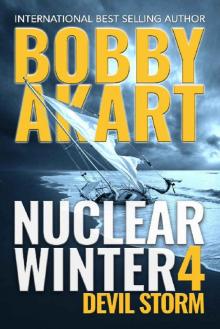 Nuclear Winter Devil Storm: Post Apocalyptic Survival Thriller (Nuclear Winter Series Book 4)
Nuclear Winter Devil Storm: Post Apocalyptic Survival Thriller (Nuclear Winter Series Book 4) Geostorm The Pulse: A Post Apocalyptic EMP Survival Thriller (The Geostorm Series Book 2)
Geostorm The Pulse: A Post Apocalyptic EMP Survival Thriller (The Geostorm Series Book 2)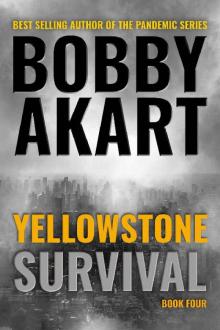 Yellowstone: Survival: A Post-Apocalyptic Survival Thriller (The Yellowstone Series Book 4)
Yellowstone: Survival: A Post-Apocalyptic Survival Thriller (The Yellowstone Series Book 4)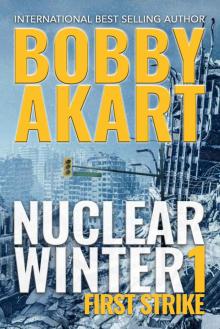 Nuclear Winter First Strike: Post-Apocalyptic Survival Thriller
Nuclear Winter First Strike: Post-Apocalyptic Survival Thriller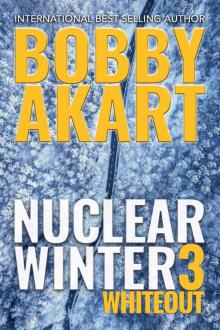 Nuclear Winter Whiteout
Nuclear Winter Whiteout Doomsday Anarchy
Doomsday Anarchy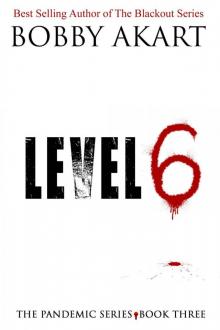 Pandemic: Level 6: A Post Apocalyptic Medical Thriller Fiction Series (The Pandemic Series Book 3)
Pandemic: Level 6: A Post Apocalyptic Medical Thriller Fiction Series (The Pandemic Series Book 3) Martial Law
Martial Law Odessa Reborn: A Terrorism Thriller (Gunner Fox Book 4)
Odessa Reborn: A Terrorism Thriller (Gunner Fox Book 4)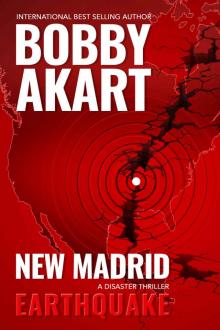 New Madrid Earthquake
New Madrid Earthquake Beyond Borders: Post Apocalyptic EMP Survival Fiction (The Lone Star Series Book 2)
Beyond Borders: Post Apocalyptic EMP Survival Fiction (The Lone Star Series Book 2)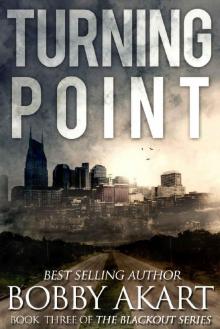 The Blackout Series (Book 3): Turning Point
The Blackout Series (Book 3): Turning Point Patriot's Farewell: A Political Thriller Fiction Series (Boston Brahmin Political Thrillers Book 7)
Patriot's Farewell: A Political Thriller Fiction Series (Boston Brahmin Political Thrillers Book 7) Lines in the Sand_Post Apocalyptic EMP Survival Fiction
Lines in the Sand_Post Apocalyptic EMP Survival Fiction The Mechanics: A Post-Apocalyptic Fiction Series
The Mechanics: A Post-Apocalyptic Fiction Series The Loyal Nine
The Loyal Nine Axis of Evil
Axis of Evil Axis of Evil: Post Apocalyptic EMP Survival Fiction (The Lone Star Series Book 1)
Axis of Evil: Post Apocalyptic EMP Survival Fiction (The Lone Star Series Book 1) Lines in the Sand: Post Apocalyptic EMP Survival Fiction (The Lone Star Series Book 3)
Lines in the Sand: Post Apocalyptic EMP Survival Fiction (The Lone Star Series Book 3)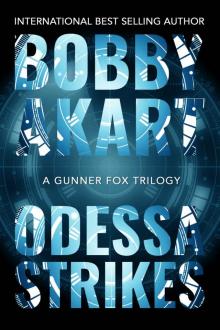 Odessa Strikes
Odessa Strikes The Blackout Series (Book 4): Shiloh Ranch
The Blackout Series (Book 4): Shiloh Ranch Hornet's Nest: A Post Apocalyptic EMP Survival Fiction Series (The Blackout Series Book 5)
Hornet's Nest: A Post Apocalyptic EMP Survival Fiction Series (The Blackout Series Book 5)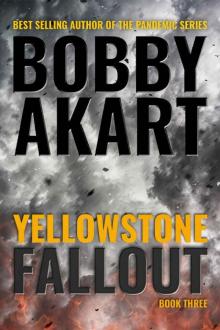 Yellowstone: Fallout: A Post-Apocalyptic Survival Thriller (The Yellowstone Series Book 3)
Yellowstone: Fallout: A Post-Apocalyptic Survival Thriller (The Yellowstone Series Book 3) Electromagnetic Pulse
Electromagnetic Pulse Texas Strong: Post Apocalyptic EMP Survival Fiction (The Lone Star Series Book 4)
Texas Strong: Post Apocalyptic EMP Survival Fiction (The Lone Star Series Book 4) Fifth Column_Post Apocalyptic EMP Survival Fiction
Fifth Column_Post Apocalyptic EMP Survival Fiction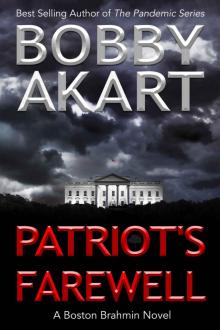 Patriot's Farewell
Patriot's Farewell Texas Strong_Post Apocalyptic EMP Survival Fiction
Texas Strong_Post Apocalyptic EMP Survival Fiction Pandemic: The Innocents: A Post-Apocalyptic Medical Thriller Fiction Series (The Pandemic Series Book 2)
Pandemic: The Innocents: A Post-Apocalyptic Medical Thriller Fiction Series (The Pandemic Series Book 2) Shiloh Ranch: A Post Apocalyptic EMP Survival Fiction Series (The Blackout Series Book 4)
Shiloh Ranch: A Post Apocalyptic EMP Survival Fiction Series (The Blackout Series Book 4) Cyber Attack
Cyber Attack Beyond Borders
Beyond Borders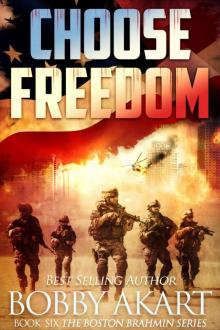 Choose Freedom: A Post-Apocalyptic Fiction Series (The Boston Brahmin Book 6)
Choose Freedom: A Post-Apocalyptic Fiction Series (The Boston Brahmin Book 6)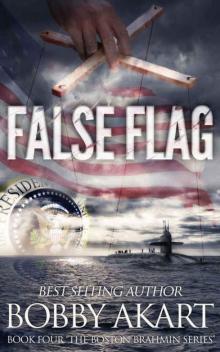 False Flag
False Flag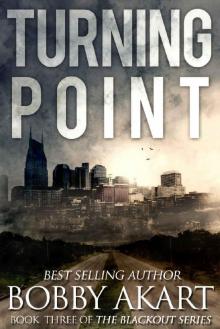 Turning Point: A Post Apocalyptic EMP Survival Fiction Series (The Blackout Series Book 3)
Turning Point: A Post Apocalyptic EMP Survival Fiction Series (The Blackout Series Book 3)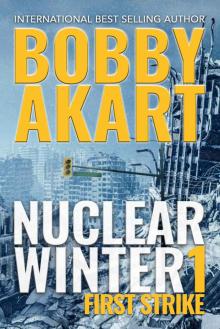 Nuclear Winter First Strike
Nuclear Winter First Strike Pandemic: Beginnings: A Post-Apocalyptic Medical Thriller Fiction Series (The Pandemic Series Book 1)
Pandemic: Beginnings: A Post-Apocalyptic Medical Thriller Fiction Series (The Pandemic Series Book 1) Devil's Homecoming: A Post Apocalyptic EMP Survival Fiction Series (The Blackout Series Book 6)
Devil's Homecoming: A Post Apocalyptic EMP Survival Fiction Series (The Blackout Series Book 6) The Blackout Series (Book 6): Devil's Homecoming
The Blackout Series (Book 6): Devil's Homecoming Yellowstone: Inferno: A Post-Apocalyptic Survival Thriller (The Yellowstone Series Book 2)
Yellowstone: Inferno: A Post-Apocalyptic Survival Thriller (The Yellowstone Series Book 2) Fifth Column: Post Apocalyptic EMP Survival Fiction (The Lone Star Series Book 5)
Fifth Column: Post Apocalyptic EMP Survival Fiction (The Lone Star Series Book 5) Yellowstone: Hellfire: A Post-Apocalyptic Survival Thriller (The Yellowstone Series Book 1)
Yellowstone: Hellfire: A Post-Apocalyptic Survival Thriller (The Yellowstone Series Book 1) The Blackout Series (Book 2): Zero Hour
The Blackout Series (Book 2): Zero Hour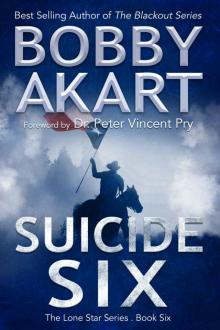 Suicide Six: Post Apocalyptic EMP Survival Fiction (The Lone Star Series Book 6)
Suicide Six: Post Apocalyptic EMP Survival Fiction (The Lone Star Series Book 6)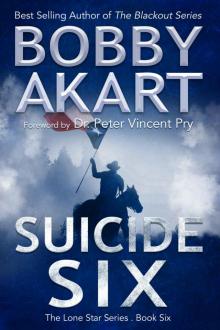 Suicide Six_Post Apocalyptic EMP Survival Fiction
Suicide Six_Post Apocalyptic EMP Survival Fiction Zero Hour: A Post-Apocalyptic EMP Survival Fiction Series (The Blackout Series Book 2)
Zero Hour: A Post-Apocalyptic EMP Survival Fiction Series (The Blackout Series Book 2) Beyond Borders_Post Apocalyptic EMP Survival Fiction
Beyond Borders_Post Apocalyptic EMP Survival Fiction Pandemic: Quietus: A Post-Apocalyptic Dystopian Fiction Series (The Pandemic Series Book 4)
Pandemic: Quietus: A Post-Apocalyptic Dystopian Fiction Series (The Pandemic Series Book 4) 36 Hours: A Post-Apocalyptic EMP Survival Fiction Series
36 Hours: A Post-Apocalyptic EMP Survival Fiction Series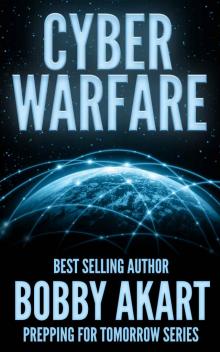 Cyber Warfare
Cyber Warfare